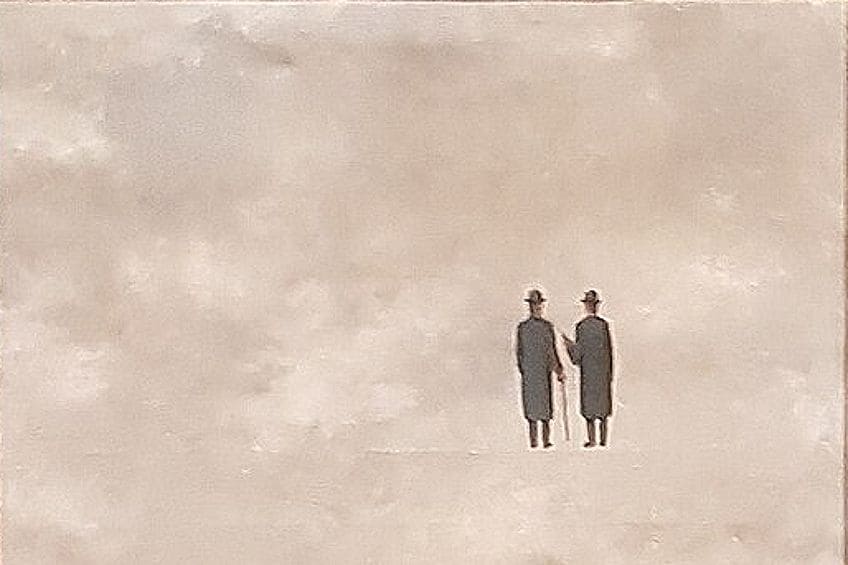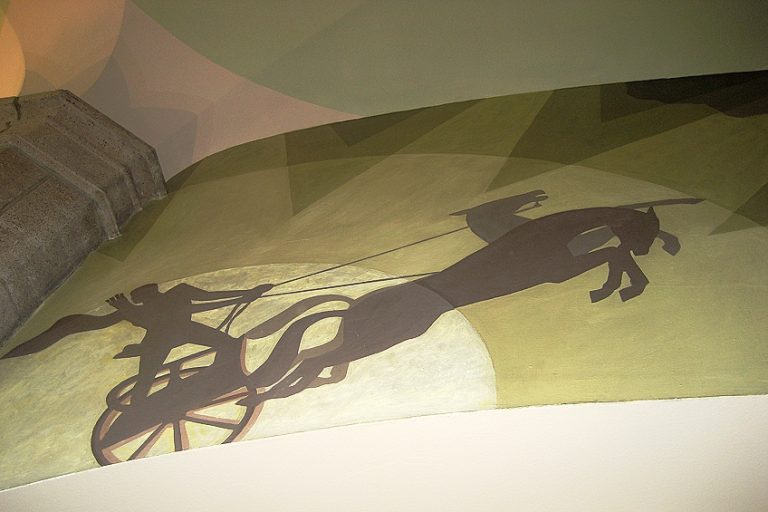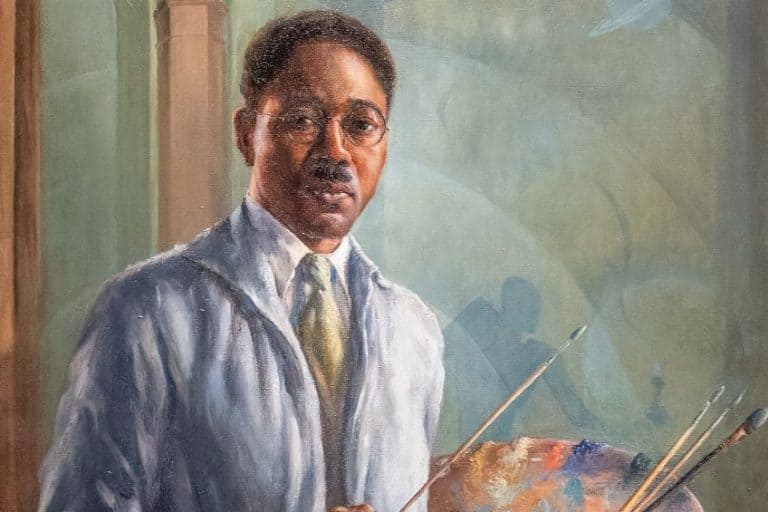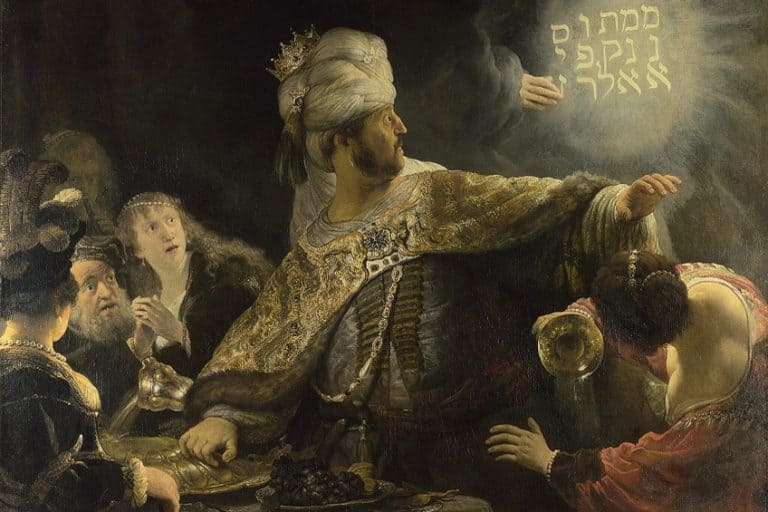“Golconda” by René Magritte – The “Golconda” Painting Analysis
The Golconda by René Magritte (not to be confused with La Gioconda (1503), the Italian name for The Mona Lisa by Leonardo da Vinci), is a Surrealist painting from 1953. Although similar sounding to the Renaissance female beauty, it sports multitudes of men all lined up and in the air. Read more about the painting in the Golconda painting analysis below.
Table of Contents
Artist Abstract: Who Was René Magritte?
René François Ghislain Magritte was born on November 21, 1898, in Lessines in Belgium, and died of pancreatic cancer on August 15, 1967, in Brussels, Belgium. He was one of the leading Surrealist artists and always questioned the nature of reality and the representation of it. He started art at a young age, and his earliest style has been described as Impressionist, but he found Surrealism when he moved to Paris in 1927. During his early teenage years, he lost his mother to suicide and was reportedly at the scene when her body was found. He was married to Georgette Berger, and they reportedly did not have children. Some of Magritte’s famous artworks include The Lovers (1928) The Treachery of Images (This Is Not a Pipe) (1929), and The Son of Man (1964).
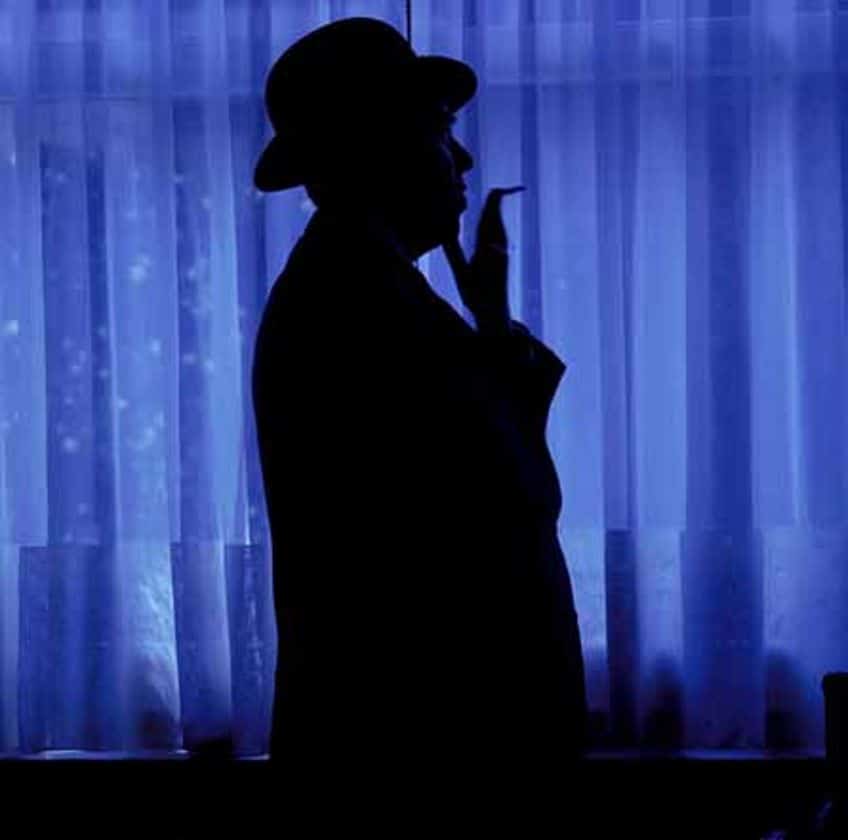
Golconda (1953) by René Magritte in Context
The Golconda painting analysis below will first start with a contextual overview discussing when Magritte painted it and what it means, which will be followed by a formal analysis, discussing the subject matter in more detail and how Magritte composed the piece according to the elements of art.
| Artist | René François Ghislain Magritte |
| Date Painted | 1953 |
| Medium | Oil on canvas |
| Genre | Genre |
| Period/Movement | Surrealism |
| Dimensions (cm) | 80 x 100.3 |
| Series/Versions | N/A |
| Where Is It Housed? | The Menil Collection, Houston, Texas, United States |
| What It Is Worth | Purchased by Alexander Lolas in 1953, with other Magritte paintings, reportedly for 7, 500 FB (Burundian Francs). In 1954, it was purchased by John and Dominique de Menil, the founders of the collection. The exact price paid remains uncertain. |
Contextual Analysis: A Brief Socio-Historical Overview
Golconda by René Magritte is a Surrealist composition, easily identified as one by the multitudes of men standing afloat in the air around an urban environment. The meaning of this oil on canvas has often been explored and discussed with a consensus that Magritte left a lot open to interpretation and ambiguity. The title, Golconda, is named after a city called Golconda in Hyderabad, Telangana, India. It is also defined as a “rich mine” or something that is a place/source that holds wealth.
However, this idea could possibly not have anything to do with the subject matter of the composition.
Magritte’s Golconda also touches on ideas of the collective in society, of being a part of a system and uniformity, lacking a sense of individualism, which could explain why the artist depicted the men almost like duplicates of one another, wearing the same outfits, and seemingly emotionally shut off from one another due to no interaction with each other. Are these men mere copies of one another, each on the front line of a working society, living a lifeless life? These questions arise the more you investigate the scene. However, did Magritte intend this?
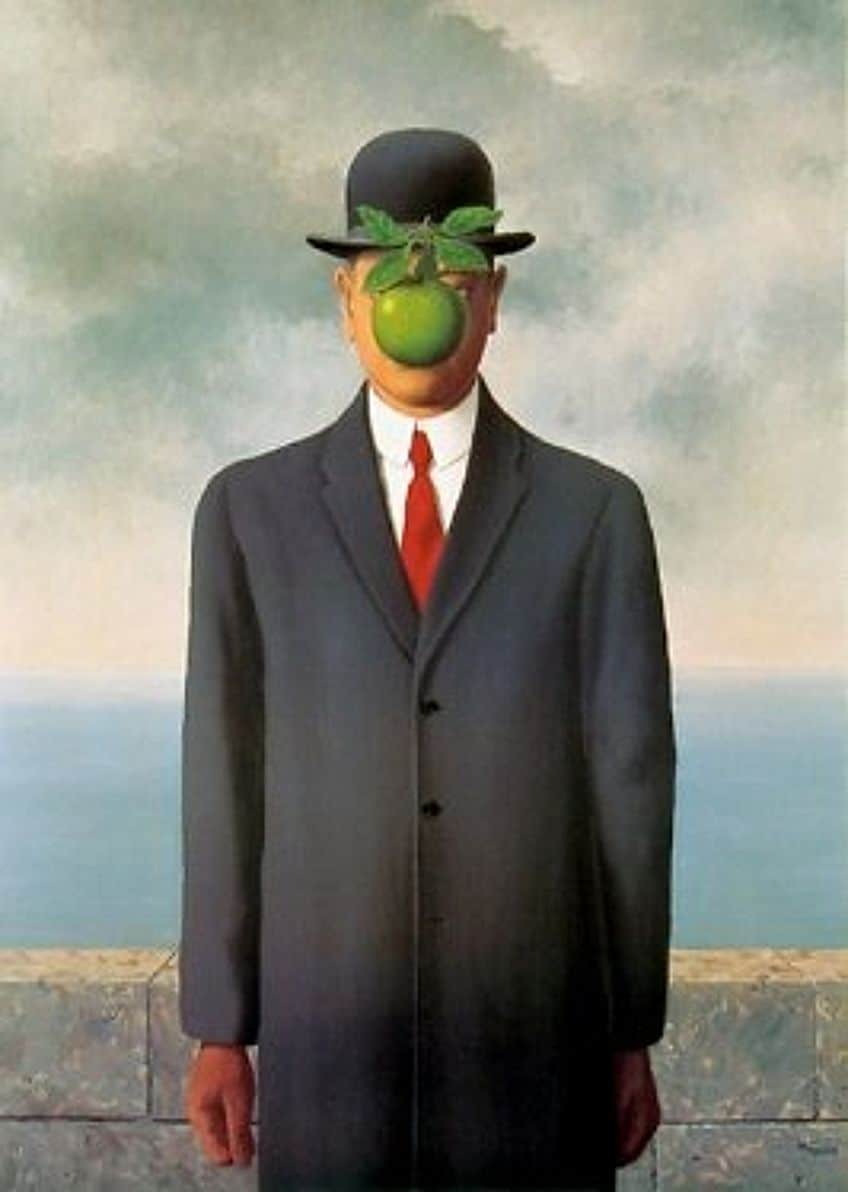
Another influence on the meaning of Golconda can also be contextualized around the artist’s own lifestyle when he painted it. He reportedly lived in an environment that the painting’s urbanity resembles, which were suburban neighborhoods in Brussels. The name for the title of the painting was given by Magritte’s friend Louis Scutenaire, who was a poet. Magritte also included him in the painting as one of the men. He is the central figure of the three figures in the second row of figures from the bottom in the foreground, who are also backed by the red roof of the building.
Formal Analysis: A Brief Compositional Overview
The Golconda painting analysis will provide a visual description of the subject matter followed by a look at how the main art elements arrange the composition, namely, according to color, texture, line, shape, form, and space.
Subject Matter: Visual Description
Golconda by René Magritte depicts an urban landscape meeting the sky. It is composed of a row of red-roofed buildings, which have been described as a Belgian architectural style. All the windows appear closed with the curtains inside drawn. It appears that only the upper two stories and attics of the building are visible, which compose the lower half of the composition; the blue sky composes the upper half.
The right edge of the composition depicts a portion of another building, which appears closer as if it is right next to us, the viewers. The edges of its windows just jut into the composition. What makes this seemingly normal urban scene less normal is dispersed, and in mid-air, dark upright, almost pen-like, shapes, which are in fact the figures of men.
They appear to be standing as if they might be waiting for something, or merely just positioned where they are without any purpose. Furthermore, their direction has also been questioned, are they moving up or down?
They are all formally dressed in suits and ties, bowler hats, and long dark gray/black overcoats below their knees. Interestingly, these are outfits that René Magritte also used to wear himself. A notable item is the bowler hat, which is repeated in numerous of his other artworks like The Son of Man (1964) and Man in a Bowler Hat (1964), and which was attributed to the artist’s style.
Some of the men have their hands in their coat pockets, others’ arms are at their sides, and others are holding items in their hands, which appear to be briefcases. Some of the men are looking straight at us, the viewers and others are facing to the left, right, and what appears to have their backs to us. Their facial expressions appear somewhat neutral as if they are almost mindlessly staring into the space ahead of them. The men in the foreground are more visible than those in the middleground. The men towards the middleground are floating close enough to the building for us, the viewers, to notice their shadows on the wall, windows, and roof. The background consists of men behind the building and in the sky in the distance.
Color
The dominant colors in Golconda by René Magritte consist of the dark gray/black from the men’s garments, the darker red of the building’s roof, the neutral concrete beige of the building, and the lighter blue of the sky. However, there appears to be an overall color harmony due to no bright or stark colors creating contrasting effects. There is also an unknown light source that appears to originate from the left side of the composition.
This is suggested by figures’ shadows that appear to be cast to the right including one side of their faces that appear lighter than the other side.
Texture
The brushstrokes of René Magritte’s Golconda appear smooth and imply a sense of realism in the subject matter. For example, the smooth surface of the buildings, which gives the impression of stone, or the men’s coats and the curtains in the windows, appear softer.
Line
Golconda by René Magritte depicts a distinct horizontal and vertical linearity, namely the horizontal orientation of the composition conveyed by the buildings in the middleground, which appears to create a divisionary line between the lower and upper part of the painting. This is contrasted by the vertical direction of all the men, and they convey a directional vertical line going either up or down.
The vertical orientation of the windows on the buildings echoes the men’s orientation too.
Shape and Form
There is an interplay of geometric and organic/naturalistic shapes and forms in Golconda by René Magritte, notably the square and rectangular shapes of the building and windows, the gable roof on the left side of the building is a triangular shape with a circle in the center that appears to be a small window. The men, although rigid in their shape, provide a contrasting, more naturalistic form compared to the urban setting around them. For example, their curved hats and figurative forms.
Space
René Magritte created a sense of depth utilizing other art elements like color and light and dark effects. This is created by the men’s shadows on the building, which indicates the distance between the men and the building. The men in the background are lighter in color and hazier compared to the men in the foreground who appear clearer and more visible.
This technique is referred to as the aerial (or atmospheric) perspective.
Magritte also depicted different sizes, the scale of the men in the background is smaller compared to the men in the foreground, which conveys a sense of spatial depth and how far the men recede. Another interesting feature of the spatial area in Golconda is the repetitive pattern Magritte arranged the men in. Some have described it as a patterned grid, which has been likened to a diamond shape.
Magritte: Many Men, Many Meanings
Magritte was known to depict a surrealistic reality, a “representation” of reality. According to Charly Herscovici, who was given ownership of Magritte’s copyright, when he was interviewed about Magritte’s artwork, he described that Magritte understood how images “lie” and that “these images of men aren’t men, just pictures of them”.

This article explored several possible interpretations of Golconda by René Magritte, which included a closer look at how the artist composed the intriguing and dream-like subject matter. While there are many men, or many meanings, in this painting, the one constant was Magritte’s vision, which always went beyond and bent what is real.
Frequently Asked Questions
Who Painted Golconda?
The Surrealist artist René Magritte painted the oil on canvas, Golconda (1953), which measures 80 by 100.3 centimeters. The title has been described to mean a so-called source of great wealth or a rich mine. It is the name of a collapsed city, also called Golconda, in Hyderabad, Telangana, in India.
What Does the Painting Symbolize?
Some theories around what Golconda (1953) by René Magritte may symbolize explore the collective and individual. Additionally, it also plays on the realistic appearance of everyday objects or figures that are placed in unique ways, which questions their meaning.
Where Is Golconda by René Magritte Located?
The oil on canvas, Golconda (1953), by René Magritte is housed at the Menil Collection in Houston, Texas, in America. It was reportedly bought in 1954 by John and Dominique de Menil, the founders of the collection, from Alexander Lolas, who in turn reportedly bought the painting in 1953 with several other of Magritte’s paintings, reportedly for 7, 500 FB (Burundian Francs).
Alicia du Plessis is a multidisciplinary writer. She completed her Bachelor of Arts degree, majoring in Art History and Classical Civilization, as well as two Honors, namely, in Art History and Education and Development, at the University of KwaZulu-Natal, South Africa. For her main Honors project in Art History, she explored perceptions of the San Bushmen’s identity and the concept of the “Other”. She has also looked at the use of photography in art and how it has been used to portray people’s lives.
Alicia’s other areas of interest in Art History include the process of writing about Art History and how to analyze paintings. Some of her favorite art movements include Impressionism and German Expressionism. She is yet to complete her Masters in Art History (she would like to do this abroad in Europe) having given it some time to first develop more professional experience with the interest to one day lecture it too.
Alicia has been working for artincontext.com since 2021 as an author and art history expert. She has specialized in painting analysis and is covering most of our painting analysis.
Learn more about Alicia du Plessis and the Art in Context Team.
Cite this Article
Alicia, du Plessis, ““Golconda” by René Magritte – The “Golconda” Painting Analysis.” Art in Context. July 12, 2023. URL: https://artincontext.org/golconda-by-rene-magritte/
du Plessis, A. (2023, 12 July). “Golconda” by René Magritte – The “Golconda” Painting Analysis. Art in Context. https://artincontext.org/golconda-by-rene-magritte/
du Plessis, Alicia. ““Golconda” by René Magritte – The “Golconda” Painting Analysis.” Art in Context, July 12, 2023. https://artincontext.org/golconda-by-rene-magritte/.


